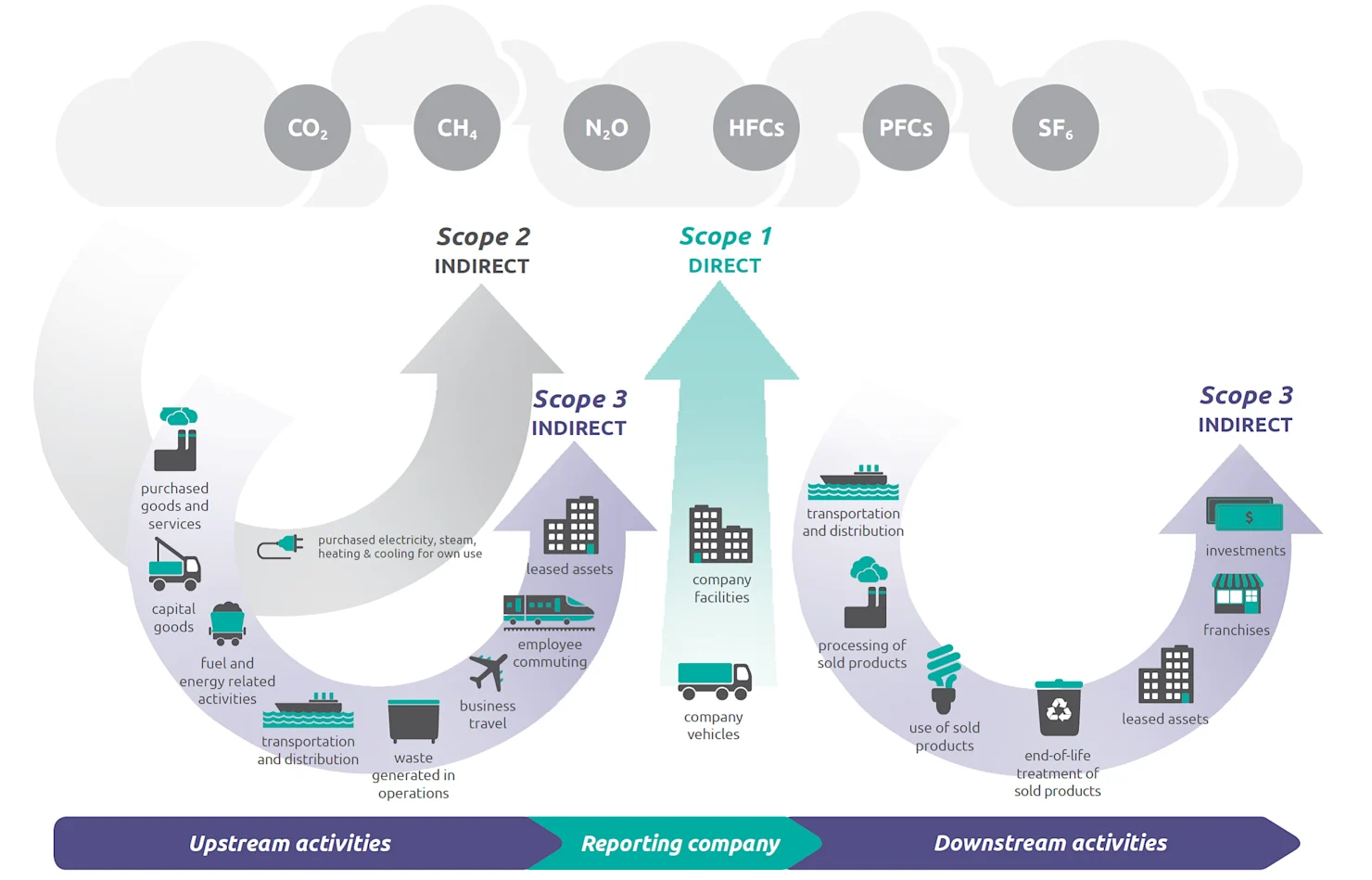Scope 2 vs Scope 3 Emissions: What's the Difference?
To comprehend the difference between Scope 2 and Scope 3 emissions, we must first understand the concept of Scopes 1, 2, and 3 in the context of the Greenhouse Gas (GHG) Protocol, a widely used international standard for understanding, quantifying, and managing greenhouse gas emissions.

Scope 2 Emissions represent the indirect emissions from the generation of purchased electricity, steam, heating, and cooling consumed by an organisation. These emissions physically occur at the facility where the electricity or heat is generated.
Scope 3 Emissions, on the other hand, are all other indirect emissions that occur in a company's value chain. This includes emissions from both upstream and downstream activities, such as raw material extraction, employee commuting, business travel, waste disposal, and end-of-life treatment of sold products.
In short, the primary difference between Scope 2 and Scope 3 emissions lies in their source. While Scope 2 emissions result from an organisation's energy consumption, Scope 3 emissions are associated with a broader range of activities, including both upstream and downstream processes in a company's value chain.
Preparing for Future Scope 3 Requirements: A Strategic Imperative
Given the broad range of activities covered by Scope 3 emissions, addressing them can be a complex and daunting task. However, with increasing stakeholder scrutiny and evolving regulatory requirements, companies can no longer afford to ignore this crucial aspect of their ESG performance. Here's what organisations need to do to prepare for future Scope 3 requirements:
1. Understand Your Value Chain: The first step towards managing Scope 3 emissions is to understand your value chain thoroughly. This includes identifying key suppliers, understanding their emissions profiles, and mapping out the lifecycle of your products or services.
2. Engage with Suppliers: Once you've mapped out your value chain, engage with your suppliers to understand their emissions profiles and encourage them to adopt sustainable practices. This could involve setting sustainability requirements for suppliers or offering incentives for those who reduce their emissions.
3. Quantify Scope 3 Emissions: Quantifying Scope 3 emissions can be complex due to the large number of sources involved. However, there are tools and methodologies available, such as the GHG Protocol's Scope 3 Standard, to help companies measure these emissions.
4. Set and Monitor Targets: After quantifying Scope 3 emissions, set reduction targets and monitor progress towards these goals. This could involve implementing new technologies or processes, redesigning products, or working with suppliers to reduce their emissions.
5. Disclose and Report: Transparency is key when it comes to Scope 3 emissions. Regularly disclose and report on your Scope 3 emissions and progress towards your targets. This not only builds trust with stakeholders but can also help you identify areas for improvement.
Embracing the Challenge: Scope 3 Emissions and the Future of Sustainability
Addressing Scope 3 emissions is no small feat. It requires a deep understanding of an organisation's value chain, a commitment to transparency, and a willingness to engage with suppliers and other stakeholders. However, with the growing importance of ESG considerations in the corporate world, tackling Scope 3 emissions is not just a responsibility—it's a strategic opportunity.
By taking a proactive approach to Scope 3 emissions, companies can demonstrate their commitment to sustainability, differentiate themselves from competitors, and meet the expectations of a broad range of stakeholders, from investors to customers to employees.
Moreover, addressing Scope 3 emissions can also drive innovation and efficiency. For instance, working with suppliers to reduce emissions might lead to the discovery of more efficient processes or materials. Similarly, redesigning products to reduce their end-of-life emissions could result in more innovative, sustainable products that appeal to environmentally conscious consumers.
Importantly, managing Scope 3 emissions requires a long-term perspective. Companies need to acknowledge that significant reductions in these emissions may not occur overnight. But with persistence, collaboration, and a commitment to continuous improvement, they can make meaningful progress towards a more sustainable future.
In conclusion, while Scope 3 emissions present significant challenges, they also offer opportunities for companies to lead in the transition to a low-carbon economy. As ESG considerations continue to shape the business landscape, those who embrace the challenge of Scope 3 emissions will be well-positioned to succeed in this new era of sustainable business.

